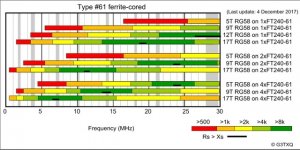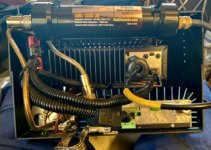707ways2Sunday
Member
- Joined
- Nov 1, 2023
- Messages
- 76
No matching network required. Not often that I string some wire and the first cut lands on target. This one did and I will take it.
36’ 8” of 14awg stranded insulated wire with a DIY 1:1 current Balun. Oriented vertically horizontally polarized. About 13’ AGL to the feed point.
talking pretty good this morning.
36’ 8” of 14awg stranded insulated wire with a DIY 1:1 current Balun. Oriented vertically horizontally polarized. About 13’ AGL to the feed point.
talking pretty good this morning.
Attachments
Last edited:






